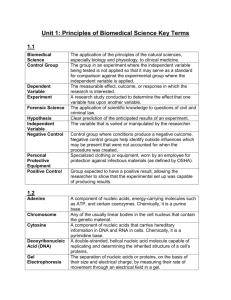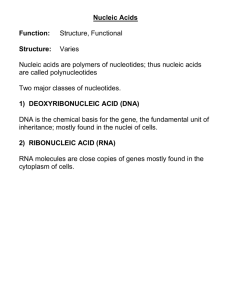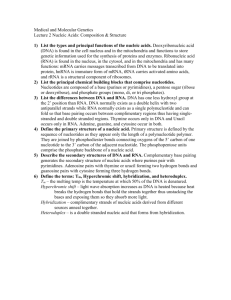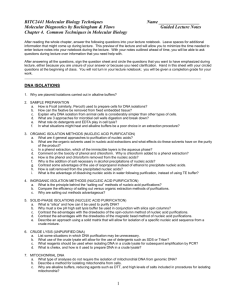Lesson 1.1 Investigating the Scene
advertisement
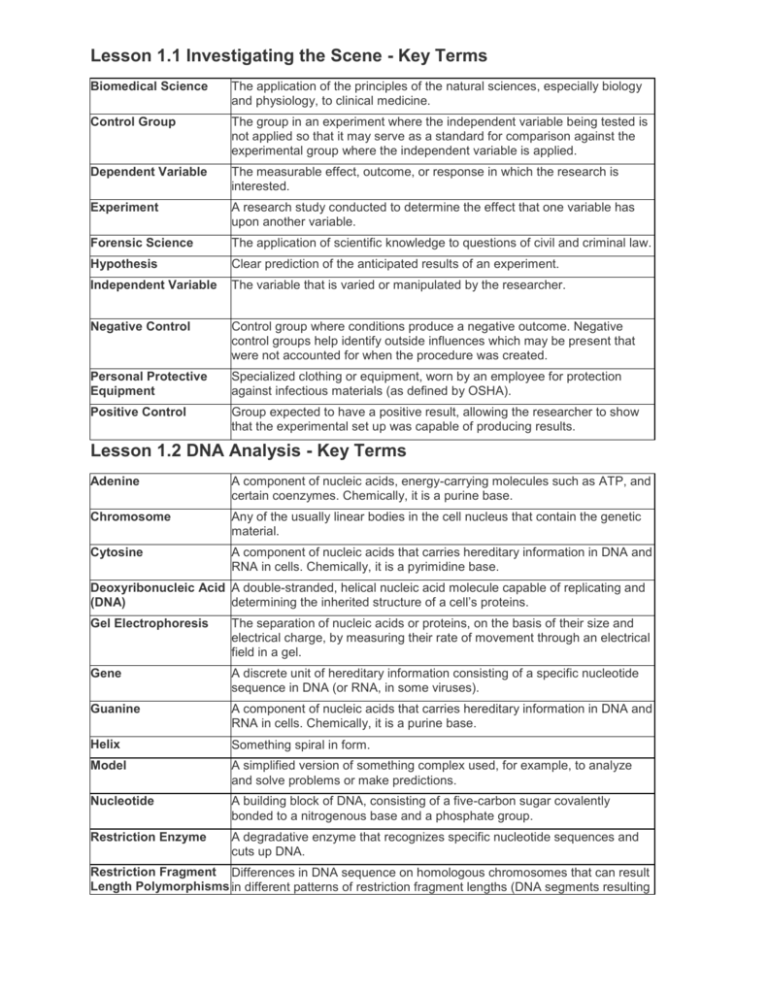
Lesson 1.1 Investigating the Scene - Key Terms Biomedical Science The application of the principles of the natural sciences, especially biology and physiology, to clinical medicine. Control Group The group in an experiment where the independent variable being tested is not applied so that it may serve as a standard for comparison against the experimental group where the independent variable is applied. Dependent Variable The measurable effect, outcome, or response in which the research is interested. Experiment A research study conducted to determine the effect that one variable has upon another variable. Forensic Science The application of scientific knowledge to questions of civil and criminal law. Hypothesis Clear prediction of the anticipated results of an experiment. Independent Variable The variable that is varied or manipulated by the researcher. Negative Control Control group where conditions produce a negative outcome. Negative control groups help identify outside influences which may be present that were not accounted for when the procedure was created. Personal Protective Equipment Specialized clothing or equipment, worn by an employee for protection against infectious materials (as defined by OSHA). Positive Control Group expected to have a positive result, allowing the researcher to show that the experimental set up was capable of producing results. Lesson 1.2 DNA Analysis - Key Terms Adenine A component of nucleic acids, energy-carrying molecules such as ATP, and certain coenzymes. Chemically, it is a purine base. Chromosome Any of the usually linear bodies in the cell nucleus that contain the genetic material. Cytosine A component of nucleic acids that carries hereditary information in DNA and RNA in cells. Chemically, it is a pyrimidine base. Deoxyribonucleic Acid A double-stranded, helical nucleic acid molecule capable of replicating and (DNA) determining the inherited structure of a cell’s proteins. Gel Electrophoresis The separation of nucleic acids or proteins, on the basis of their size and electrical charge, by measuring their rate of movement through an electrical field in a gel. Gene A discrete unit of hereditary information consisting of a specific nucleotide sequence in DNA (or RNA, in some viruses). Guanine A component of nucleic acids that carries hereditary information in DNA and RNA in cells. Chemically, it is a purine base. Helix Something spiral in form. Model A simplified version of something complex used, for example, to analyze and solve problems or make predictions. Nucleotide A building block of DNA, consisting of a five-carbon sugar covalently bonded to a nitrogenous base and a phosphate group. Restriction Enzyme A degradative enzyme that recognizes specific nucleotide sequences and cuts up DNA. Restriction Fragment Differences in DNA sequence on homologous chromosomes that can result Length Polymorphisms in different patterns of restriction fragment lengths (DNA segments resulting (RFLPs) from treatment with restriction enzymes). Thymine A component of nucleic acid that carries hereditary information in DNA in cells. Chemically, it is a pyrimidine base. Lesson 1.3 The Findings - Key Terms Autopsy An examination of the body after death usually with such dissection as will expose the vital organs for determining the cause of death. Bibliography A document showing all the sources used to research information. Citation A written reference to a specific work (book, article, dissertation, report, musical composition, etc.) by a particular author or creator which identifies the document in which the work may be found. Documentation The act of creating citations to identify resources used in writing a work. Health Insurance Portability and Accountability Act (HIPAA) A comprehensive set of standards and practices designed to give patients specific rights regarding their personal health information. Medical Examiner A physician who performs an autopsy when death may be accidental or violent. He or she may also serve in some jurisdictions as the coroner.
